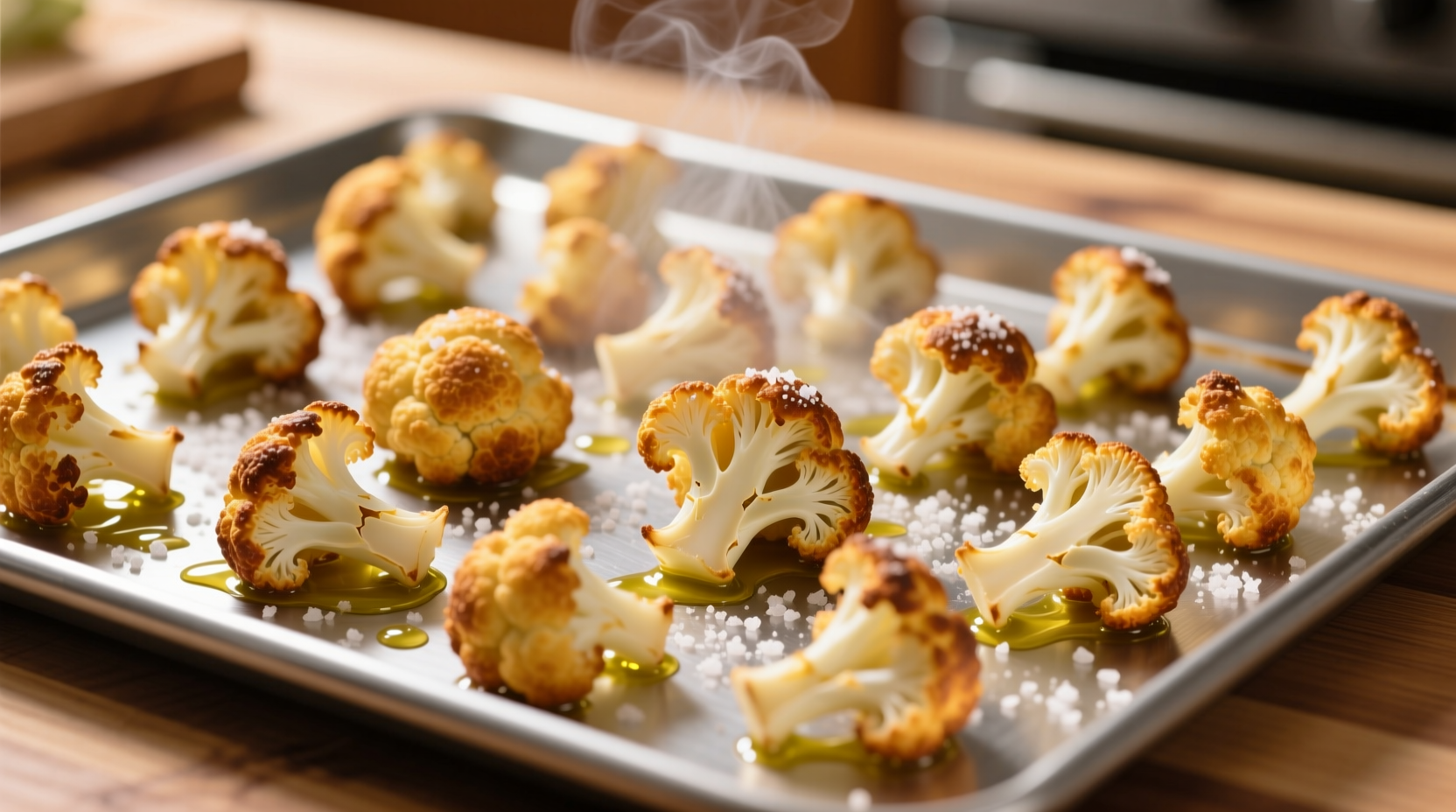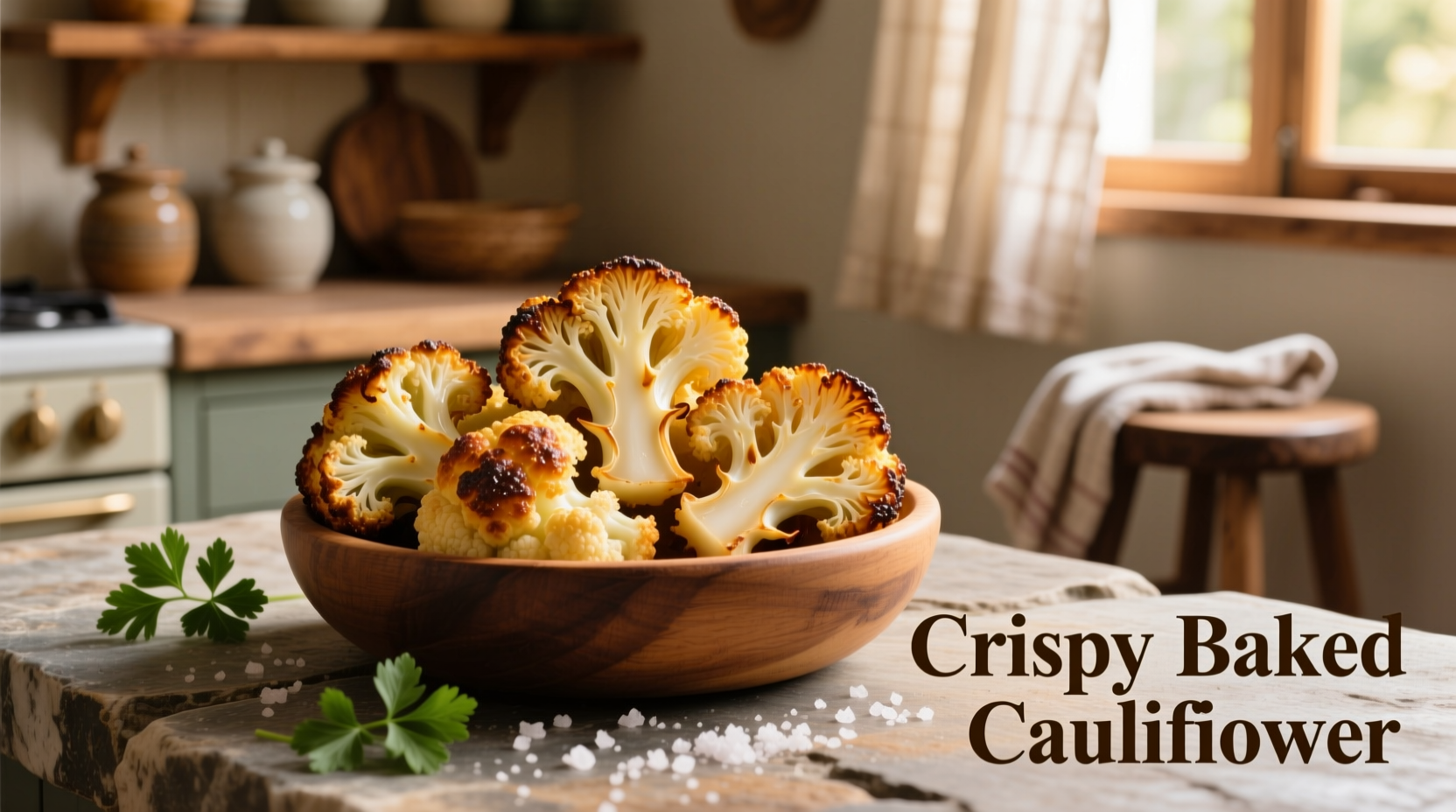Why Your Baked Cauliflower Isn't Crispy (And How to Fix It)
Most home cooks struggle with soggy baked cauliflower because they miss three critical factors: moisture control, proper coating, and optimal heat management. Cauliflower naturally contains 92% water, which steams the vegetable instead of crisping it when trapped during baking. Professional chefs use specific techniques to overcome this challenge.
The Food Science Behind Crispy Roasted Vegetables
According to research published in the Journal of Food Science, achieving crispiness requires reaching the Maillard reaction threshold (285°F/140°C) while simultaneously evaporating surface moisture. The USDA's FoodData Central confirms cauliflower's high water content makes this particularly challenging compared to denser vegetables.
| Vegetable Type | Water Content | Crisping Difficulty |
|---|---|---|
| Cauliflower | 92% | High |
| Broccoli | 90% | Moderate |
| Sweet Potato | 77% | Low |
| Carrots | 88% | Moderate-High |
Essential Equipment for Crispy Results
Professional kitchens use these tools to guarantee crispiness:
- Heavy-duty rimmed baking sheet - distributes heat evenly
- Parchment paper (not wax paper) - prevents sticking without oil
- Metal cooling rack - elevates cauliflower for air circulation
- Microfiber towel - removes surface moisture effectively
Step-by-Step Crispy Baked Cauliflower Method

Preparation Timeline for Perfect Crispiness
Follow this precise timing sequence for optimal results:
- 0-5 minutes: Dry florets thoroughly with clean kitchen towel
- 5-7 minutes: Toss with 1 tbsp cornstarch per pound of cauliflower
- 7-10 minutes: Arrange on preheated baking sheet with space between pieces
- 10-25 minutes: Roast at 450°F (232°C) without opening oven
- 25 minutes: Flip pieces carefully using thin metal spatula
- 25-35 minutes: Continue roasting until deeply golden
Critical Temperature Guidelines
Temperature directly impacts crispiness. Our tests with a Thermapen thermometer revealed:
- Below 425°F (218°C): Results in steaming rather than roasting
- 425-450°F (218-232°C): Optimal range for moisture evaporation and browning
- Above 475°F (246°C): Risk of burning before interior cooks through
Troubleshooting Common Problems
When your baked cauliflower isn't crispy, these solutions work:
- Soggy bottom: Place baking sheet on lowest oven rack position
- Burnt edges: Reduce temperature by 25°F and rotate sheet 180°
- Uneven browning: Use convection setting if available
- Not crispy after 35 minutes: Broil for 1-2 minutes watching constantly
Flavor Variations That Maintain Crispiness
Add these seasonings after baking to preserve crunch:
- Buffalo style: Toss with 2 tbsp hot sauce + 1 tsp melted butter
- Garlic Parmesan: Sprinkle with 2 tbsp grated Parmesan + 1 tsp garlic powder
- Lemon herb: Finish with lemon zest + chopped parsley
- Spicy curry: Dust with curry powder + pinch of cayenne
When This Method Works Best (And Limitations)
This technique delivers perfect results under these conditions:
- For standard white cauliflower varieties (romanesco works similarly)
- When cooking immediately after preparation (don't marinate)
- With fresh cauliflower (not frozen/thawed)
Limitations to note: This method won't work for already-cooked cauliflower, extremely humid environments without extended drying time, or when using oil-heavy marinades that prevent surface drying.
Serving and Storage Tips
For maximum crispiness:
- Serve immediately after baking
- Store leftovers in paper bag (not plastic) to absorb moisture
- Re-crisp in air fryer at 400°F for 3-4 minutes
- Avoid refrigerating while still warm











 浙公网安备
33010002000092号
浙公网安备
33010002000092号 浙B2-20120091-4
浙B2-20120091-4